There are no shortcuts to learning a new skill like how to play piano. But if you practice smart, start slow, and master your fundamentals, you can save time and learn piano faster. In this post, we’ll share our favorite tips on how to learn piano fast. Then, we’ll share a seven-day lesson plan for absolute beginners so you can start on the right foot (or, rather—hand).
Table of Contents:
Love more guides like this? Subscribe to The Note for more quick tips, cheat sheets, explainers, and other stuff piano players love. Delivered to your inbox for free.
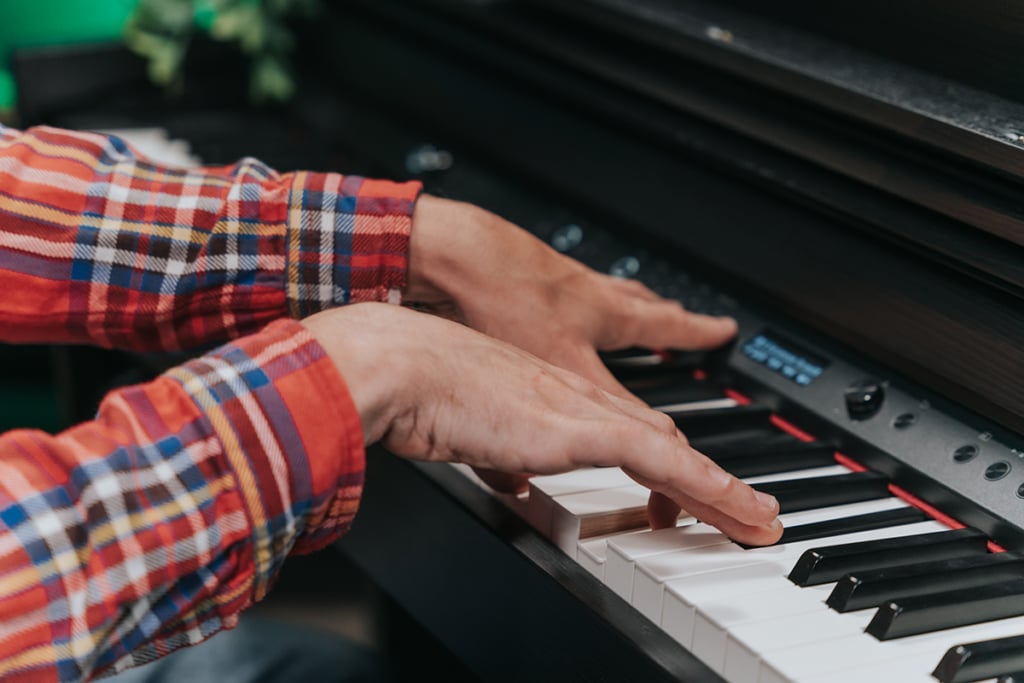
One of the first things you’ll learn as a new piano player is the layout of the keyboard. You’ll learn the musical alphabet and how to form scales and simple chords.
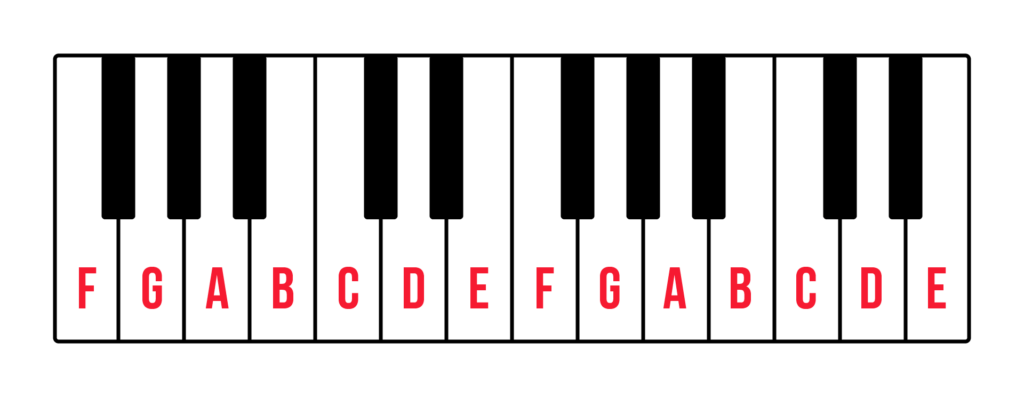
Practicing chords and scales can feel tedious, but knowing them well will help you familiarize yourself with the keyboard. If you have a deep, embodied understanding of how a C major scale or G major triad feels under your fingers, you will pick up new music faster.
> Piano Scales: Types of Scales & How to Apply Them
🎥 Check out this cheeky video that explains the importance of knowing your scale shapes.Playing with both hands is one of the hardest things about piano. This skill can be frustrating for new students, but if you feel uncomfortable, embrace it. This means your brain is learning, creating new neuropathways. Soon, having each hand do something different will feel second nature.
We have a ton of hand independence exercises that are designed to keep things interesting, not boring:
The biggest secret to faster sheet music reading? Don’t read all the notes.
Approach sheet music like a language. When you see the word “cat,” you don’t read every single letter (C-A-T). Similarly, if you recognize a C major triad on the grand staff, you don’t have to read every note: you’ll see it as a C major triad. Approach chords like words and musical phrases like sentences.
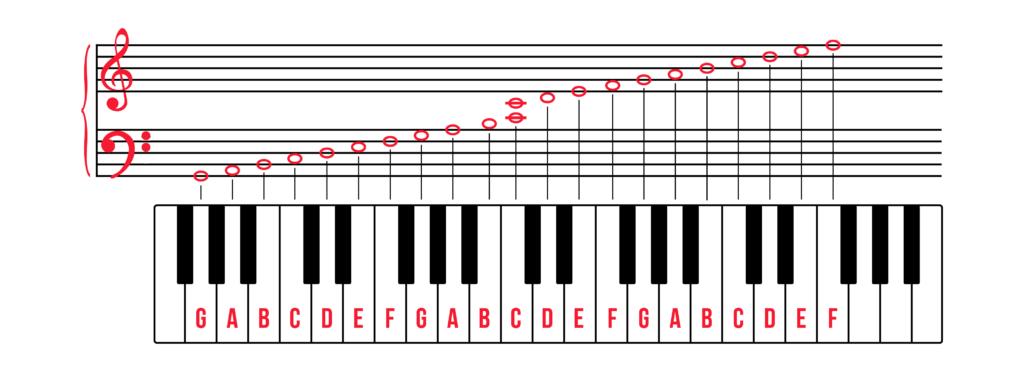
This takes practice, but just like learning how to read, the more you practice the better you’ll get.
> The Ultimate Beginner’s Guide to Reading Music
Let’s face it, you want your fingers to fly. Playing fast is fun, but a consistent, tight run at a slower tempo is always better than a fast and sloppy run.
So, drill your fundamentals. Practice at a slow tempo, then increase your speed only when you can master the current tempo.
> 3 Speed Exercises to Make Your Fingers Fly
How fast you learn the piano can depend on what method you choose. Many modern methods, including the Pianote Method, build on chording as a fundamental skill. This method lets students learn the basic framework of popular songs as early as their first day. Reading sheet music comes later.
This is different from the traditional classical method, which emphasizes sheet music literacy and can be a slower start. Each method has its pros and cons and the best one for you depends on the type of music you like, your learning style, and your goals.
> Classical Piano Lessons vs. Modern Piano Lessons
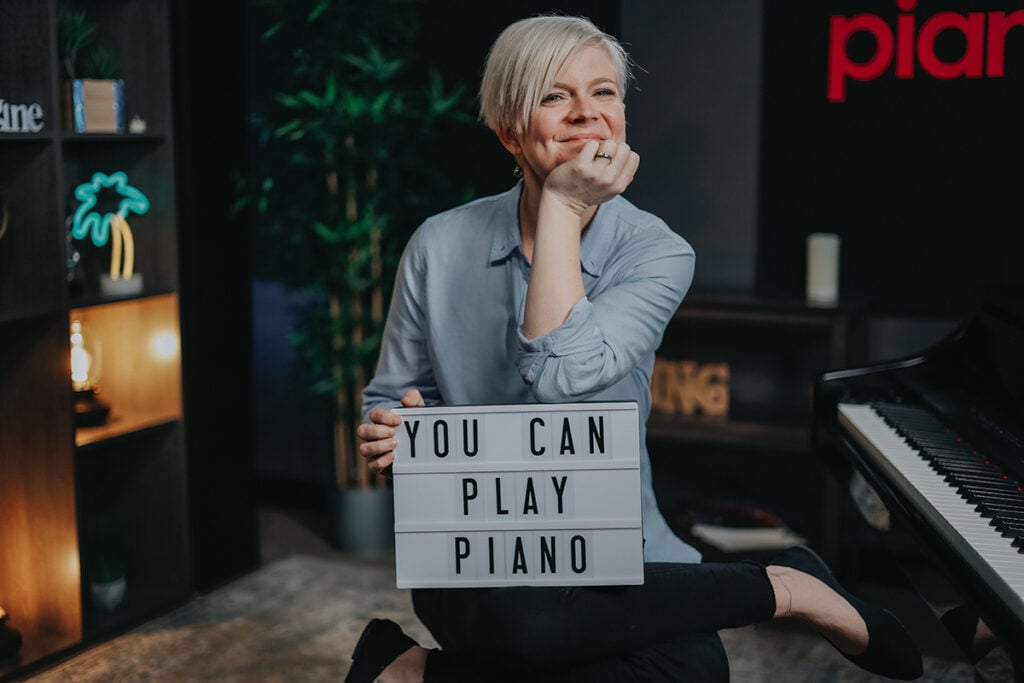
One of the toughest things about learning a new skill is staying motivated. And be prepared to struggle with this when learning piano, because you will get frustrated at some point!
When you feel unmotivated, it helps to remember your “why.” Why did you choose to learn piano? Because you love music? To connect with loved ones? To experience the joy of performing? Revisit that “why” often.
> How to Keep Playing for Life
On the note of realistic goals, make a practice plan—one you can stick to.
And keep it fun. Not everyone likes repetitive scales up and down, but if you pair your scale practice with a chord progression, suddenly scales are less boring! Here are some practice routine ideas for beginners you can use as inspiration:
Our advice is to set S.M.A.R.T. goals that are specific, measurable, attainable, relevant, and time-bound.
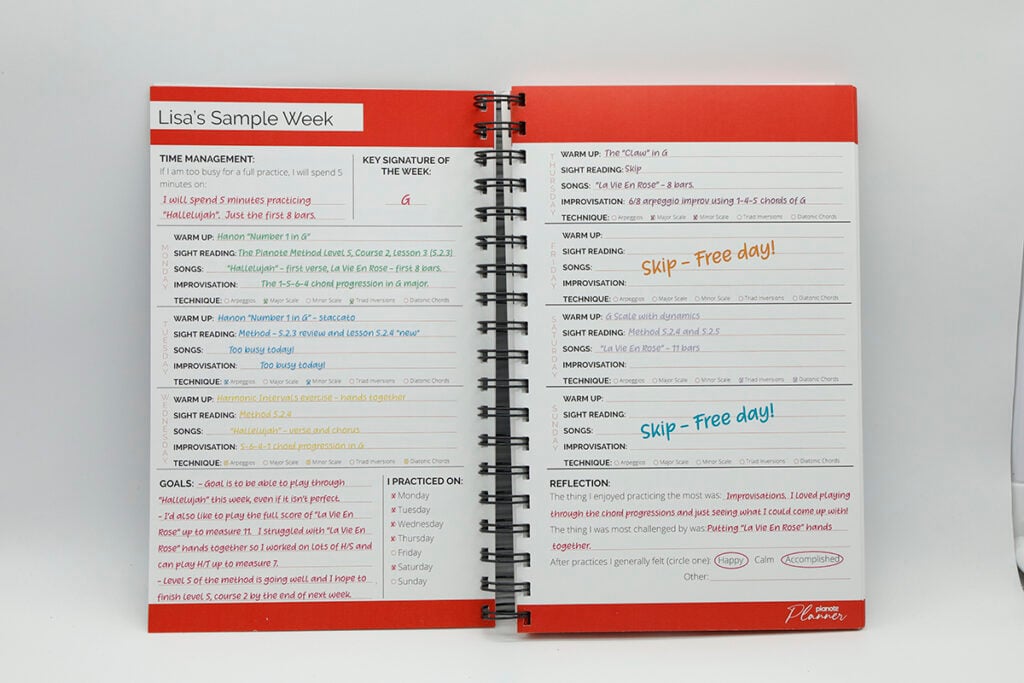
Ambition is admirable, but it’s important to stay realistic. If you’re not fluent at reading sheet music, it’s unlikely you’ll be able to play unabridged Beethoven by this time next year. But you may be able to play simplified Beethoven!
Having other people in your corner can make an enormous difference. If you stay in touch with other piano players (in person or through an online forum), you can progress a lot faster. Why? Because other people can spot flaws in your playing you may not have noticed yourself. Or, if you’re struggling with something, someone who has been there, done that can tell you how they overcame it, saving you time.
But don’t compare yourself to other people. We all come from different backgrounds. Someone who’s progressing fast may have advantages you’re not aware of.
Another tip? Go to gigs. Chat with the performers and learn their stories.
First, let’s learn how to find our way around the keyboard. Find a set of two black keys and play the white key to the bottom left of them. That’s C. Now play all the white keys until you reach the next set of two black keys and hit the white key on the bottom left. You’ve just played an octave from C to C. The names of these notes are C-D-E-F-G-A-B-C. You can also remember that the white key to the bottom-left of the set of black keys is F.
On day 2, we’ll develop finger dexterity by playing the five-finger scale. To play the scale, put your hands in C position and play the notes (C-D-E-F-G), one after another. Then, try this in a different position, such as G position (G-A-B-C-D).
Play these scales hands apart. Then, try playing both hands together. If this movement feels weird at first, that’s totally normal and will go away with practice 🙂
Now let’s play something more song-like! Using the hand positions we’ve learned, we’ll play fifths, which means we’ll play with fingers 1 and 5 on both hands. Try playing fifths in the following positions: C > G > A > F. Play hands apart, then hands together. If this sequence sounds familiar, you’re on to something! This is a very common chord progression used in a lot of pop music.
Now try something a little more challenging: hand independence. Get into C position. On your left hand, play and hold C-G. Then, play four steady fifths on your right hand on top of it. Try this in different positions and experiment with fifths in both hands too. Next, try breaking up the notes in your right hand. If you want to go further, explore the other notes under your right hand. Get creative.
If you know fifths, you’re halfway to playing chords. Just add finger 3 to your existing fifths and voilà, you’re now playing triads!
Now try playing triads built on the following bottom notes: C > G > A > F. Congratulations, you just played your first chord progression! Now try mixing up the order of chords.
By the way, here are the chords you’re playing:
C
C Major Triad

Am
A Minor Triad

G
G Major Triad

F
F Major Triad

Yes, you can learn a song this early in your journey.
But first, let’s take a look at the “Imagine” chord chart. If you look at the lyrics in our video, you’ll see letters above the words like “C” and “G.” These letters represent chords. “C” represents the C triad we just learned (C-E-G), and “G” represents the G triad (G-B-D). Play the chord and sing the melody on top of it. Switch to the next chord when it comes up in the lyrics.
You can also hold down the root note (C in the C triad or G in the G triad) with your left hand while you add some rhythm to your right hand. Like you’re strumming a guitar!
When you get to the chorus, play the notes after the slashes as your left-hand bass notes.
You can more about slash chords here.
Can you believe how far you’ve come? In just seven days, you’ve gone from never touching a piano to playing “Imagine”!
Let’s flesh out “Imagine” a little more. Watch our video tutorial (at the top of this article) to learn how to play the iconic intro so that even if you don’t sing, everyone will recognize what song you’re playing.
If you want to go more in-depth with “Imagine,” we have a full and detailed tutorial here. We also have beginner-friendly tutorials for other pop songs like “Let It Be,” “Just the Way You Are,” and “Happy Birthday.”
Learning how to play piano takes physical, mental, and emotional persistence. But you can do it! A little strategy and planning can go a long way. In summary:
Your musical journey starts today: try Pianote and get access to drum, vocal, and guitar lessons too!
Pianote is the Ultimate Online Piano Lessons Experience™. Learn at your own pace, get expert lessons from real teachers and world-class pianists, and join a community of supportive piano players. Learn more about becoming a Member.


By signing up you’ll also receive our ongoing free lessons and special offers. Don’t worry, we value your privacy and you can unsubscribe at any time.
We use cookies for traffic data and advertising. Cookie Policy »